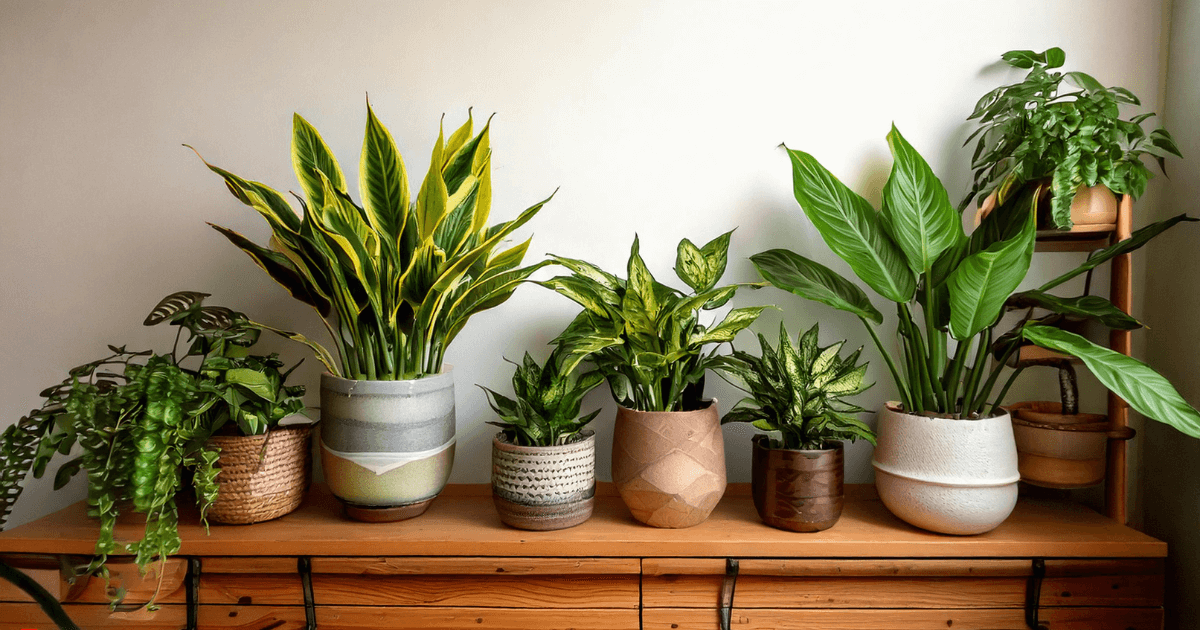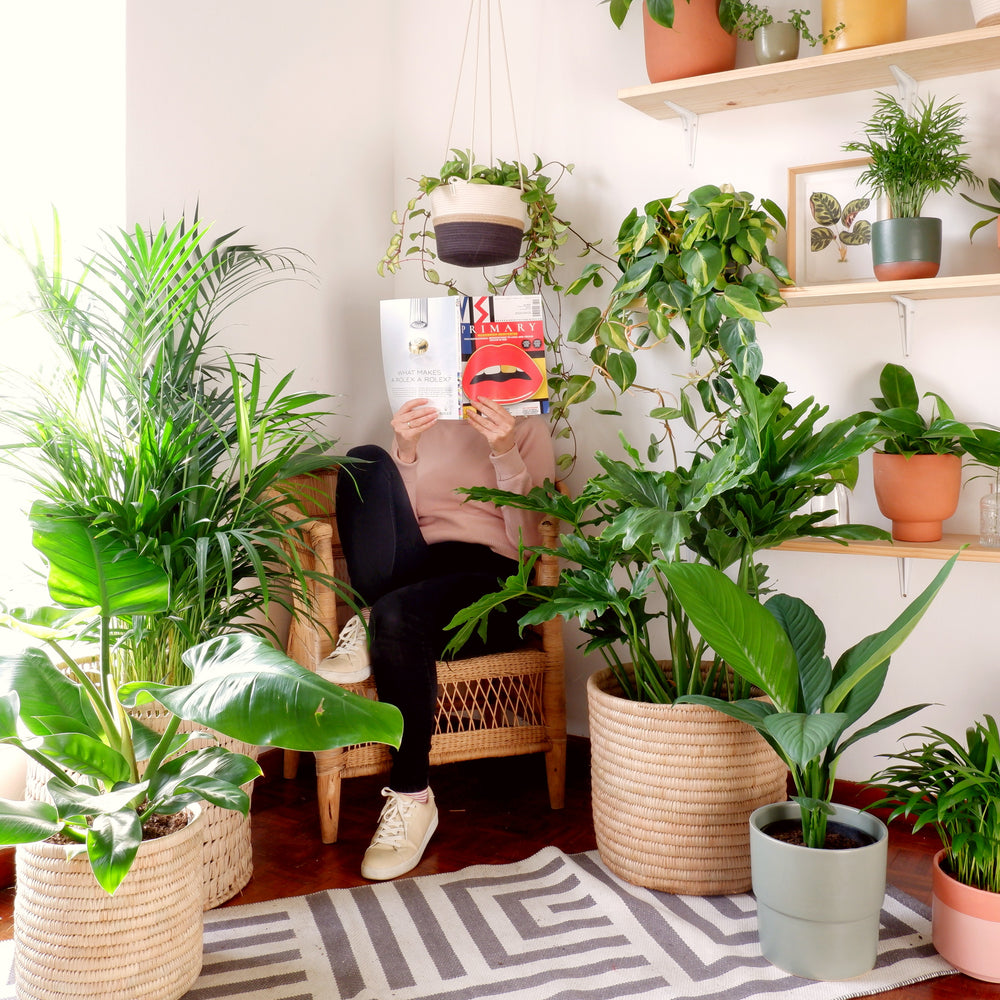Best Low-Light Indoor Plants That Thrive with Minimal Sunlight
Best Low-Light Indoor Plants That Thrive with Minimal Sunlight
Blog Article
Transform Your Home With Beautiful Low-Light Indoor Plants and Their Benefits
Incorporating low-light indoor plants right into your home can significantly improve both the ecological and visual quality of your home. These plants, which grow in dark conditions, serve not just as decorative aspects but additionally as natural air purifiers, making them excellent for urban dwellers or those with restricted sunlight direct exposure. As we discover the various sorts of low-light plants and their benefits, you may discover unusual means to integrate them into your home that can transform your environments in methods you could not have anticipated.
Benefits of Low-Light Plants
Low-light plants provide many benefits for interior settings, making them an excellent choice for both beginner and knowledgeable gardeners. Among the main advantages is their flexibility to low-light problems, permitting individuals to improve their space without the demand for extensive sunlight exposure. This characteristic makes them excellent for apartments, offices, and other locations with minimal all-natural light.

Additionally, including low-light plants into home design can boost the visual charm of an area. Their lush vegetation and differed textures produce a calming atmosphere, contributing to general well-being. Lastly, the presence of plant has actually been connected to decreased tension levels and improved productivity, making low-light plants a practical selection for boosting both physical and mental wellness in interior settings.
Leading Low-Light Indoor Plants
While many interior plants thrive in brilliant light, several types are particularly appropriate for low-light problems, making them optimal for various indoor rooms. One popular option is the Snake Plant (Sansevieria), understood for its striking upright leaves and resilience, needing marginal care. One more superb option is the Pothos (Epipremnum aureum), which includes heart-shaped leaves and can route wonderfully from hangers or shelves, growing in reduced light and including a lush touch.
The ZZ Plant (Zamioculcas zamiifolia) is commemorated for its shiny fallen leaves and ability to stand up to forget, making it excellent for busy way of lives. The Tranquility Lily (Spathiphyllum) not only tolerates low light however likewise creates stunning white blooms, enhancing any type of space's visual.
For an one-of-a-kind touch, take into consideration the Cast Iron Plant (Aspidistra elatior), which without a doubt lives up to its name, flourishing in the darkest corners of your home. Finally, the Chinese Evergreen (Aglaonema) provides a range of leaf patterns and colors while being extremely forgiving in low-light conditions. These plants not just enhance indoor atmospheres however also add to air filtration, boosting your home.
Treatment Tips for Low-Light Plants

Watering methods are vital; these plants often prefer somewhat completely dry problems. Overwatering can bring about root rot, so ensure that the top inch of soil is dry prior to watering again. Usage pots with drainage holes to allow excess moisture to escape.
Humidity is an additional crucial element. Numerous low-light plants, such as ferns and peace lilies, benefit from higher moisture degrees. To raise moisture, take into consideration misting the fallen leaves or positioning a tray of water near the plants.
Fertilizing must be approached with caution. During the growing period, make use of a thinned down, well balanced fluid fertilizer monthly to support development, however prevent fertilizing during the inactive cold weather.

Innovative Ways to Show Plants
Interior plants can work as captivating focal points in any type of space, boosting both aesthetic appeal and atmosphere. Innovative display screens can boost the aesthetic impact of low-light plants, making them an essential component of your home decor. One efficient technique is to utilize tiered plant stands, which enable you to display several plants at differing elevations while making best use of flooring space.
Hanging planters are an additional ingenious option, creating a feeling of depth and drawing the eye up. Take into consideration macramé wall mounts or wall-mounted racks to introduce a special texture and design.
For an extra organized strategy, usage geometric terrariums or glass containers to house your plants, including a modern-day touch click to find out more to your interior yard. You can additionally repurpose classic products, such as teacups or wood dog crates, for an eclectic display that reflects your personality.
Enhancing Home Setting With Plants
Incorporating low-light plants into your home not only boosts aesthetic charm however additionally adds substantially to the general atmosphere. These plants act as natural decoration aspects, introducing a feeling of harmony that can change any kind of space. The existence of plant promotes a soothing atmosphere, which is specifically beneficial in high-stress settings such as home workplaces or living spaces.
Low-light plants, such as serpent plants, pothos, and ZZ plants, are not just aesthetically pleasing yet likewise improve indoor air high quality by filtering system contaminants. This dual feature enhances the setting additionally, creating a much healthier space (Best low-light indoor plants). The critical placement of these plants can additionally influence the assumption of area; for circumstances, tall plants can attract the eye up, making ceilings show up higher and areas much more spacious
Additionally, varying structures and colors of foliage add deepness to interior layout, permitting imaginative expression in home styling. Whether put on racks, in corners, or as centerpieces, low-light plants can boost the mood next page of any type of room. In summary, including these plants into your home is an efficient means to foster a warm, welcoming ambience while profiting of boosted air quality and aesthetic versatility.
Conclusion
Integrating low-light interior plants into home environments provides many benefits, including improved visual appeal and enhanced air top quality. These resistant plants, such as the Snake Plant and Peace Lily, need marginal light and upkeep, making them suitable for varied lifestyles. Their capability to filter contaminants adds to a much healthier home, while their varied structures and anonymous colors enhance indoor style (Best low-light indoor plants). Ultimately, the inclusion of low-light plants fosters a peaceful and welcoming atmosphere, changing any type of home right into a serene sanctuary.
While many interior plants grow in intense light, a number of types are especially appropriate for low-light conditions, making them perfect for various indoor rooms. One reliable technique is to use tiered plant stands, which allow you to display several plants at varying heights while taking full advantage of floor room.
Low-light plants, such as serpent plants, pothos, and ZZ plants, are not just aesthetically pleasing yet additionally enhance indoor air top quality by filtering system pollutants. Best low-light indoor plants. The strategic positioning of these plants can likewise influence the assumption of area; for instance, high plants can draw the eye upward, making ceilings show up greater and rooms more sizable
These durable plants, such as the Snake Plant and Tranquility Lily, need minimal light and maintenance, making them appropriate for diverse way of livings.
Report this page